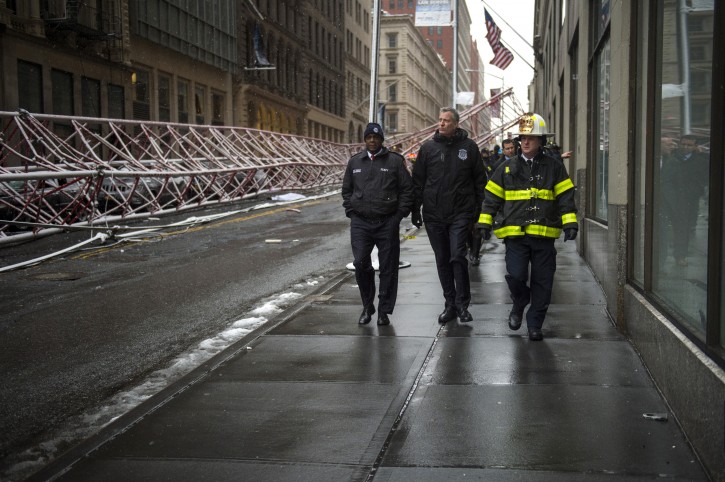
New York, NY – NYC Mayor Bill de Blasio today announced a four-point plan to increase safety when large cranes are operating. Those steps include new restrictions on crawler cranes during wind conditions, doubled fines for failure to safeguard equipment, increased enforcement of pedestrian safety alongside crane sites and more notification of crane activities to adjacent buildings.
The investigation into Friday’s crane collapse is continuing, including a forensic investigation of the equipment itself. On Friday, the Mayor ordered that the city’s crawler cranes be inspected by the Department of Buildings before they are put back into service.
“No building is worth a person’s life. We are going to ensure the record boom in construction and growth does not come at the expense of safety,” said Mayor Bill de Blasio.
“We are conducting a thorough investigation and are determined to improve the safety of cranes, and the neighborhoods in which they work, through aggressive enforcement and implementing lessons learned from this incident,” said Buildings Commissioner Rick D. Chandler, PE.
Under the new policies:
New Restrictions on Crawler Cranes: Until further notice, all crawler cranes will be required to cease operation and go into safety mode whenever steady winds are forecast to exceed 20mph or gusts to exceed 30mph. The Department of Buildings will send advisories to crane engineers when wind conditions warrant. Engineers will be required to certify the compliance with the DOB. Inspections and violations will result if certification is not reported. Through rulemaking, the DOB will raise the base penalty for failure to safeguard from $4,800 to $10,000.
More Sidewalk Protection for Pedestrians: The NYPD, FDNY, DOB and DOT will increase enforcement of sidewalk and street closures related to crane activity. The DOT will require pedestrian traffic managers on projects operating large cranes in areas with significant pedestrian traffic. The DOB will conduct inspections and issue violations to crane firms, operators and other personnel if flaggers are not appropriately restricting pedestrian and vehicular traffic.
Improved Notification for Surrounding Residents and Businesses: Prior to moving a crane, operators will be required to notify those who live or work in the area. Currently, crane operators are required to notify residents and businesses only when the crane is first installed.
New Task Force on Crane Safety: The City will convene a technical working group to develop further strategies to improve crane safety. Over the next 90 days, the task force will evaluate the conditions involved in Friday’s collapse and propose additional best practices and regulations to make New York’s cranes the safest in the world.
As reported by Vos Iz Neias
